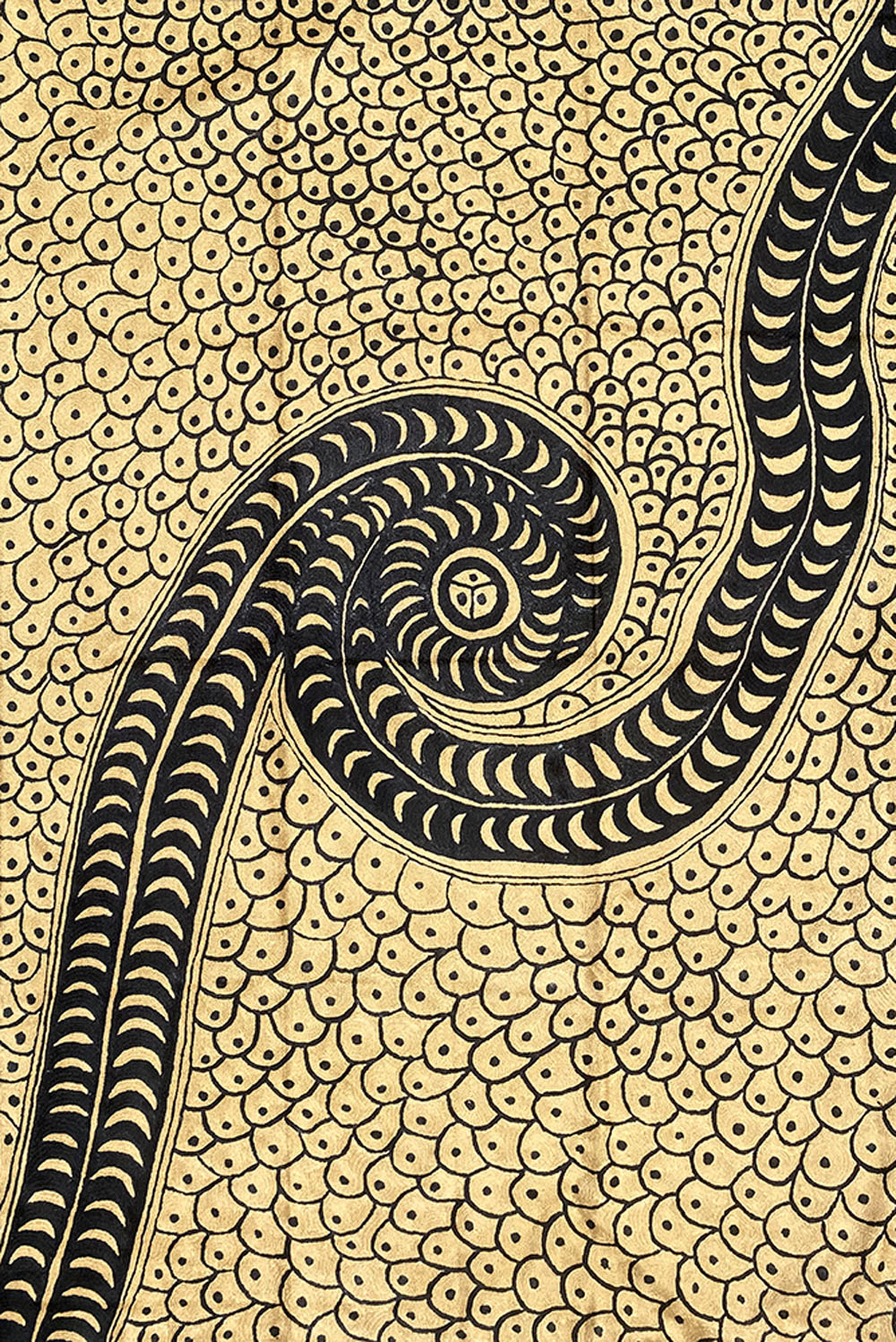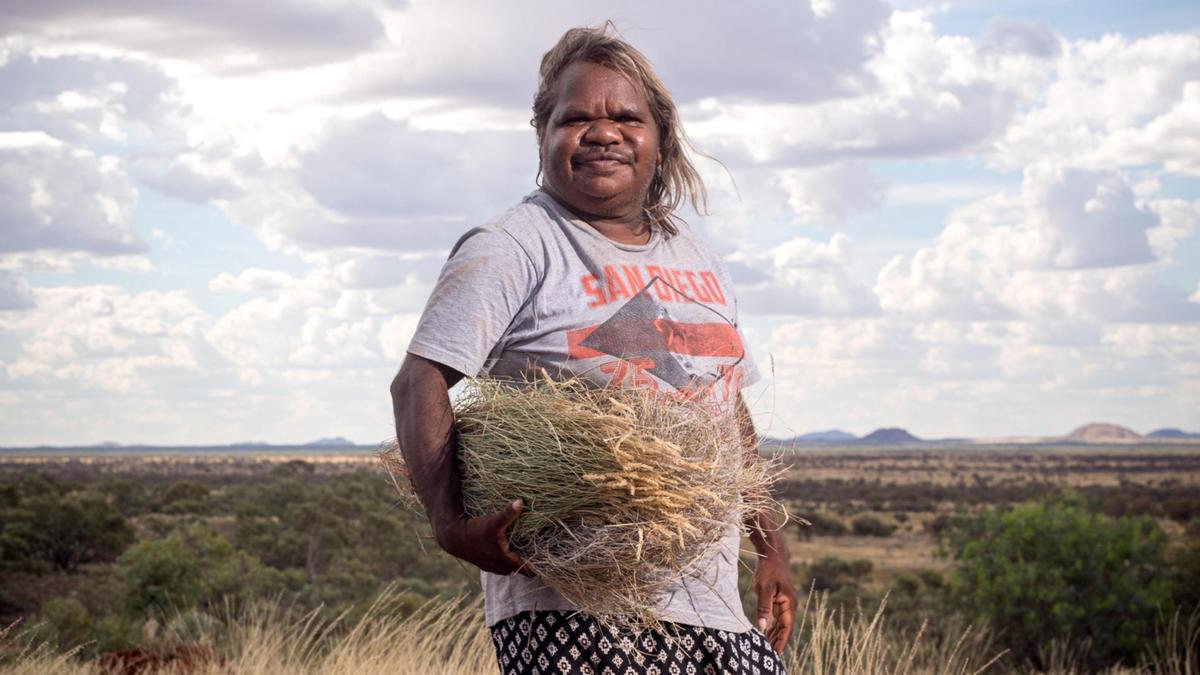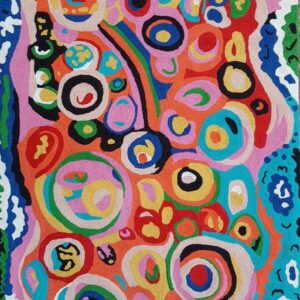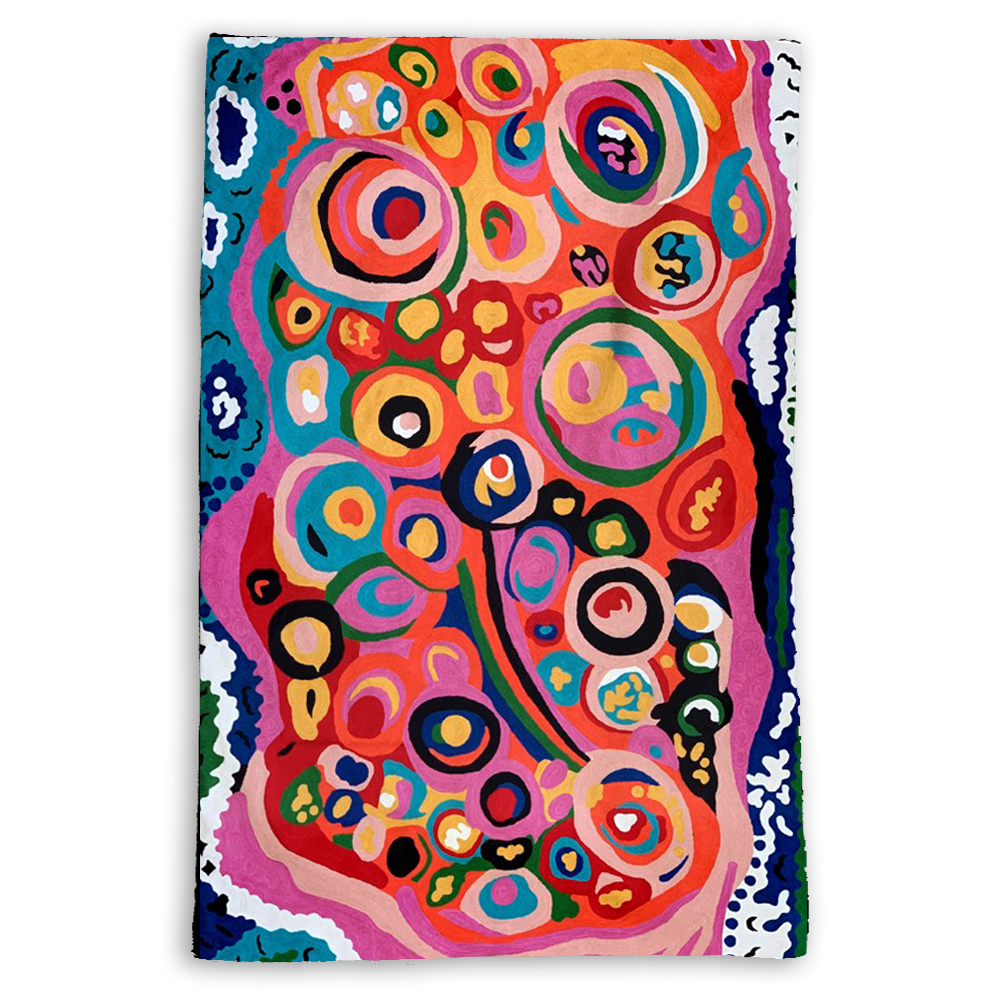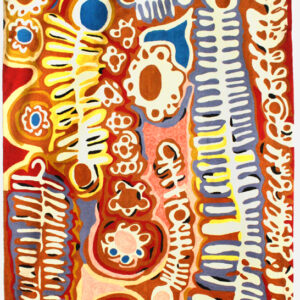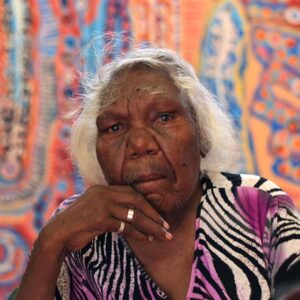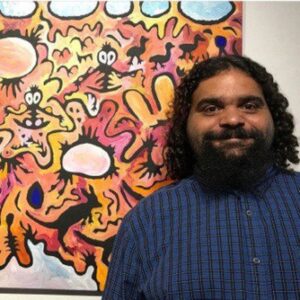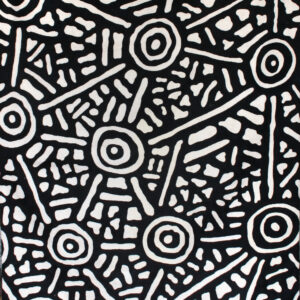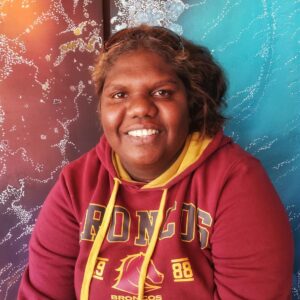Description
Composition: Hand dyed wool and cotton
Size: 122 x 183 cm (48 x 72 inches)
Features:
- Hand embroidered/chain-stitched
- All natural fibres – embroidered wool on cotton canvas
- Fair Trade certified
- Limited edition – individually numbered
- Certificate of Authenticity supplied with each kilim
- Royalties paid to the artist/family on every sale
- Hard wearing
- Back has non-slip surface
- Each kilim has flap on the rear for ease of hanging with dowel/rod
- Matching cushion covers are also available
Chain-stitched kilims are a traditional rug/soft furnishings making technique from Kashmir. As people sat on the floor they were both homewares and decoration. As many artworks are painted on the ground or 3D surfaces/bodies most of the images do not have a set orientation so can also be hung portrait or landscape if preferred.
Artist: Cynthia Burke
About the design: Punu (wood)
Cynthia is a highly skilled punu maker. Punu is the Pitjantjatjara/Yankunytjatjara word for wood, and refers to the traditional artefacts carved from local hardwood timbers, usually mulga (Acacia species). The design is applied using hot wire to burn traditional stories and patterns into the surface of the wood. Cynthia has rendered the designs in her artwork that has been translated into embroidered tapestry.
*
About the artist:
Cynthia Burke is an artist belonging to the Ngaanyatjarra language and cultural group.
Cynthia is a keen artist whose creative and arts practice covers a broad range of disciplines. Cynthia was taught weaving skills by her mother, the renowned artist and Tjanpi staff member Jean Burke (dec.). In 2013 Cynthia contributed weaving and media skills to Tjilkamarta Minyma Kutjarra Munu Wati Ngirntaka Warta (Two Porcupine Wives and Perentie Man Tree) that was part of the String Theory exhibition at the Museum of Contemporary Art in Sydney NSW. In 2012 she exhibited fibre art at the Fingers and Petals exhibition at Ellenbrook Gallery in Perth. More recently she was a finalist in the 2015 Outback Open Prize at the Broken Hill Art Gallery NSW, and exhibited at Revealed 2017 at Fremantle Arts Centre WA.
For a number of years, Cynthia has painted for Warakurna Artists and has exhibited her paintings all over Australia and overseas. Likewise, she has nationally exhibited her punu (wood carvings) with Maruku Arts.
In 2016 Cynthia began working with Tjanpi Desert Weavers at the remote office in Warakurna. In this time, she has learnt to run the core operations of this office and visits over eight communities to support Tjanpi artists. She also co-produced the Tjanpi animation Ngayuku Papa with animator Jonathan Daw, telling the story of her dog Tiny as well as being a key collaborating artist in a project with FORM and Polyglot Theatre.
She was born in Alice Springs in 1973 and now spends her time between Warakurna and Irrunytju (Wingellina) communities in the Ngaanyatjarra Lands of Western Australia.
Cynthia also works for Ngaanyatjarra Media as a camera operator and radio announcer, presenting a weekly radio program of local music and news. CB, as the locals affectionately know her, plays a selection of country and gospel music ranging from the 1950s to 2000s. Cynthia’s gospel music program Praise is broadcast weekly in Ngaanyatjarra language from Warakurna Community.
In 2013 Cynthia won the radio broadcasting award at the 15th National Remote Indigenous Media Festival Awards for Best Emerging Radio Talent NG Media and in 2011 Cynthia won the Festival Troy Albert Award for Excellence in Cinematography for works presented on ICTV, the Indigenous Community Television station of Australia.
*
CARE INSTRUCTIONS:
Do not put place/use in direct sunlight or colors may fade. To clean – dry cleaning recommended. Can be ironed (on the woollen side of the rug) on a wool steam setting. For a big rug it’s easiest done on the floor.
About the Better World Arts chainstitch kilim products
These beautiful, unique textiles are a cross-cultural collaboration combining Aboriginal designs and traditional Kashmiri rug-making techniques. Chain stitched, using hand dyed wool, each is a completely handmade piece. A more empowering way to work, this brings many direct benefits to the artists’ and their community. Control and ownership of intellectual property are also maintained. Purchase of these products guarantees a direct return to the Aboriginal artist’s family and their community.

